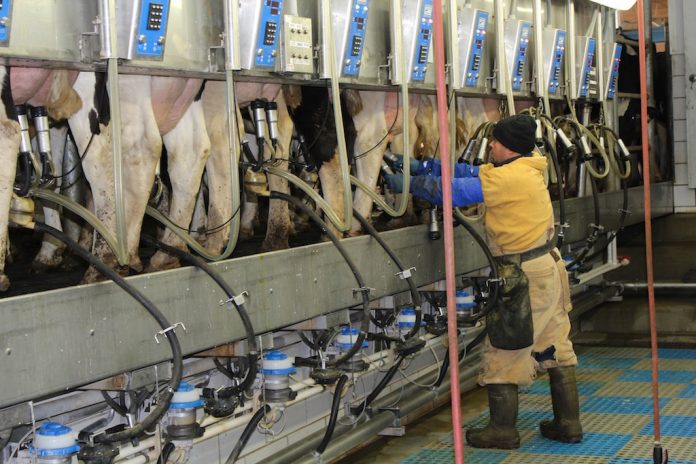By Dianne Shoemaker and Bill Weiss
A year ago, milk protein prices and milk fat prices crossed paths. Prior to that, milk fat had an extended run where it had a higher value per pound than milk protein.
After protein peaked at $3.91 per pound in November 2019, both protein and fat prices trended down with protein retaining the price advantage.
In May 2020, both fat and protein prices increased, fat increasing modestly while protein skyrocketed to $5.63 per pound in July. Even while dropping to $4.43 per pound in August, milk protein production clearly has greater income potential than milk fat.
Balancing
The unfortunate fact that record negative producer price differentials plundered milk checks received at the farm since June does not change the signal to maximize milk income through protein production. For now. To do that profitably, score has to be kept: what is the total cost to get that additional pound of protein net of any loss in fat production?
This is a nutritional balancing act that will look different on each farm. There is a clear opportunity to influence the milk check through component production. Right now, markets continue to value protein over fat.
Yield
The main dietary factors that are related to increased milk protein yield are:
1. Increasing dietary starch concentrations (but not so much as to cause acidosis).
2. Increasing dietary inclusion of fermentable starch, such as high moisture corn or wheat grain.
3. Increasing concentrations of high quality undegradable protein.
4. Improving amino acid profile by feeding specific protein sources or by feeding rumen-protected amino acids, especially methionine.
5. Reducing the concentration of dietary fat (fat supplements, distiller grains, whole cottonseed or whole soybeans).
Feed
When the price of milk protein is high relative to milk fat, replace some byproduct fiber (e.g., soyhulls, or corn gluten feed) with corn grain. This will increase starch concentration and usually increase protein yield.
Avoid excess starch because it can cause acidosis, severe milk fat depression, lameness and other health problems. Because numerous factors affect the maximum safe starch concentration, specific guidelines cannot be given, but generally more than 28% to 30% starch is risky, especially with feeding high moisture corn.
On average, assuming the diet has adequate forage and fiber (i.e., does not cause ruminal acidosis), increasing starch concentration about five percentage units and reducing neutral detergent fiber by the same amount is expected to increase the daily yield of milk protein of an average Holstein cow by about 0.075 pounds, but reduce milk fat by 0.06 pounds.
Feed costs would likely not change greatly and if milk protein is more valuable, income over feed costs should increase.
Additional information to consider regarding diet changes and implications of those changes on both fat and protein production and related considerations are discussed in more detail in Dairy Issue Brief #43-20: “Consider Dietary Changes to Take Advantage of Changes in Milk Component Prices.” Find it and other dairy resources at dairy.osu.edu.
(Dianne Shoemaker is an OSU Extension field specialist in dairy production economics. Send comments or questions in care of Farm and Dairy, P.O. Box 38, Salem, OH 44460. Bill Weiss is a professor in the Department of Animal Sciences at the Ohio Agricultural Research and Development Center in Wooster. He can be reached at weiss.6@osu.edu.)













